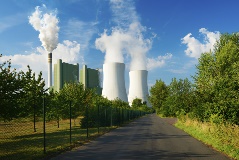Real Estate Insurance

Real Estate Insurance

Real estate insurance that lays a solid foundation.
From unforeseen site shutdowns to catastrophic weather, commercial and residential real estate is a risk-prone industry. To mitigate this risk, your clients may seek coverage for niche exposures that aren't always available in the standard lines market.
As one of the nation's largest wholesale real estate insurance brokers, Amwins is committed to providing innovative risk solutions, regardless of property class or location. Collaboration is a core tenet of our business, and we live it through our strategic partnerships with leading insurance carriers. No matter the coverage requirements, our top priority is helping you secure the solutions that best serve the needs of your clients.
Our coverages span a vast array of business classes, including but not limited to:
Residential
- Apartments
- Condominiums
- Townhouses
- High-value homes
- Mobile home parks
Commercial
- Shopping malls
- Strip shopping centers
- Single tenant retail locations
- Office buildings
- Restaurants
- Churches
- Grocery stores
- Auto dealerships
- Movie theaters
- Car washes
- Self-storage
- Stadiums
- Convention centers
Through a careful formula of industry expertise, administrative capabilities, global coverage and proprietary products, Amwins and our real estate insurance brokers are committed to meeting your clients' expectations.
Real estate in-house underwriting programs + exclusive brokerage products
Strong carrier relationships
We tend to our carrier relationships thoughtfully, ensuring we're always able to secure the best solutions for you — and your clients.
In-house actuarial + CAT modeling team
Our in-house team of actuaries licenses cutting-edge software to deliver catastrophe risk data analysis and the most accurate pricing possible.
Complex claims advocacy
From designing a proactive claims management plan to engaging on difficult and complex claims, Amwins supports our clients when they need us the most.
$6.8B
annual premium placements
630
real estate market relationships
760
real estate insurance professionals
Real Estate insurance resources + insights
Stay up to date on emerging industry trends and topics.
What Constitutes Property Damage?
Gregory Packaging is a juice cup manufacturer which was expanding and constructing a new juice packaging facility in Georgia. The newly-installed refrigeration system released ammonia during initial start-up, which injured a contractor and resulted in the plant being unsafe for workers. A remediation contractor for the company undertook to mitigate the ammonia from the building to make it safe for occupancy.
Gregory Packaging was insured by Travelers with a property damage policy, which covered “direct physical loss of or damage to” the company’s property. Travelers denied Gregory Packaging’s insurance claim, arguing that there was no physical loss or damage to covered property and was otherwise excluded under the policy limitations.
The insurance coverage dispute was filed by Gregory Packaging in New Jersey Federal Court where the policyholder’s headquarters are located. Initially, the Court addressed the “choice of law” question of whether Georgia, where the facility is located, or New Jersey, where the policyholder is headquartered, would control the insurance coverage law decision. Ultimately the Court found that under either Georgia or New Jersey law, Gregory Packaging would prevail, although the legal precedents were somewhat different.
Under Georgia law, the Court found that the ammonia release changed the building to an unsatisfactory condition needing repair. The New Jersey law analysis similarly would conclude that the ammonia release caused the facility to be unusable for a multi-day time period. Therefore, the Court held that no trial was necessary and as a matter of law the ammonia released into the Georgia building caused property damage.
Would this same analysis apply to fumes or volatile compounds (e.g., degreaser solvents, gasoline or dry-cleaning fluids) migrating into a building and making the indoor air quality unacceptable for workers or other occupants? How prolonged does the unsafe indoor air quality condition need to be to qualify as property damage? What result would your state law insurance precedent dictate in similar circumstances?
Other possible insurance issues arising from this situation could include: what other coverage defenses, depending on the exact policy provisions, would the insurer raise (like the Pollution Exclusion)? In conjunction with ultimate settlement or adjudication, would there be a follow-on subrogation claim by the insurer against the contractor allegedly responsible for the ammonia release from the equipment?
Among the lessons to be learned from this case are:
- Insurance coverage should be evaluated before any significant new business venture or change (like expanded facilities).
- Insurance should be required from insureds’ contractors.
- Recognize different states may have different insurance coverage interpretations.
- If cost-justified, be willing to challenge an insurer’s “no” coverage denials.
ABOUT THE AUTHOR
This article was authored by Charles M. Denton, Partner and Environmental Law Department Chair at Barnes & Thornburg LLP.
- Environmental
- Property
- Property & Casualty


